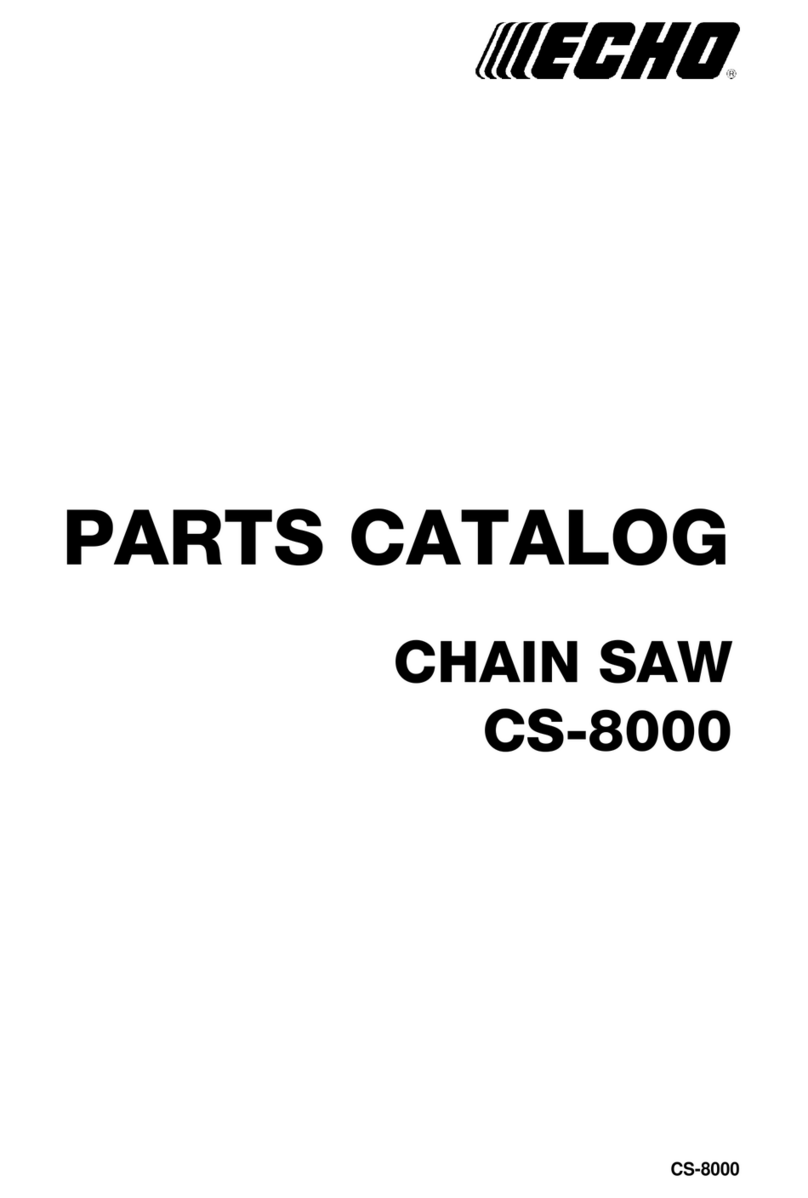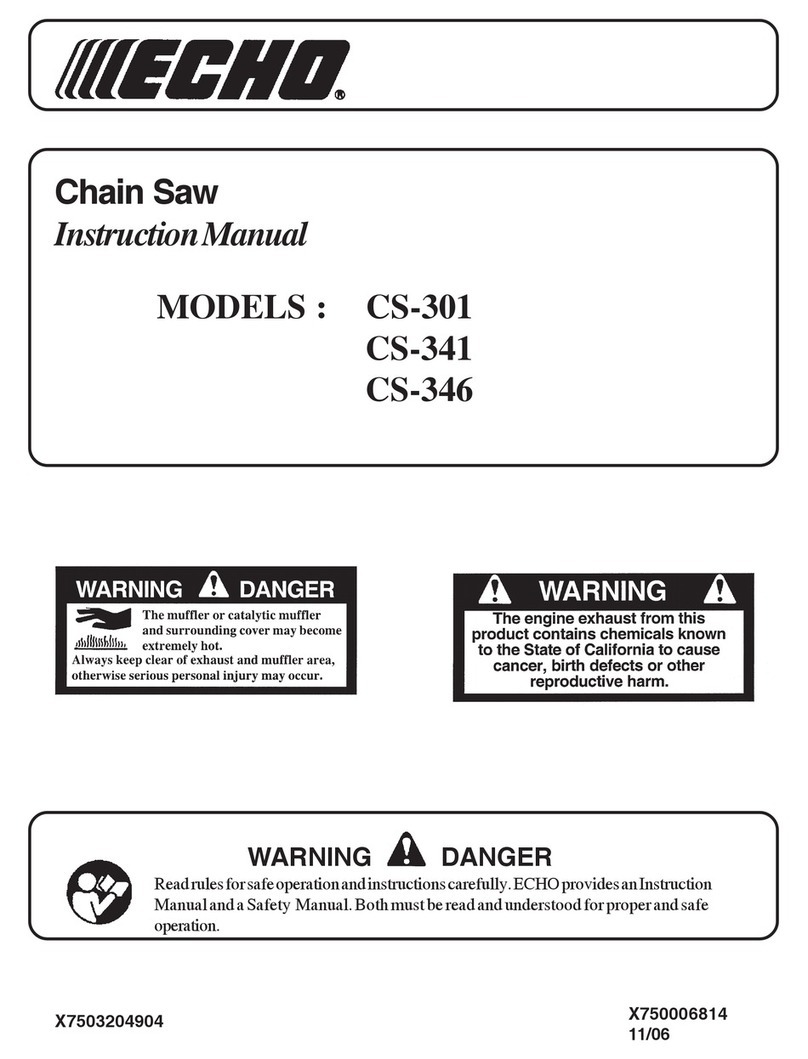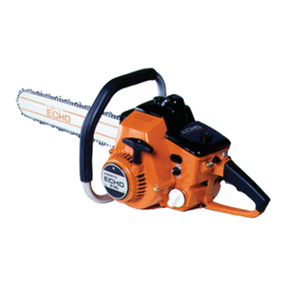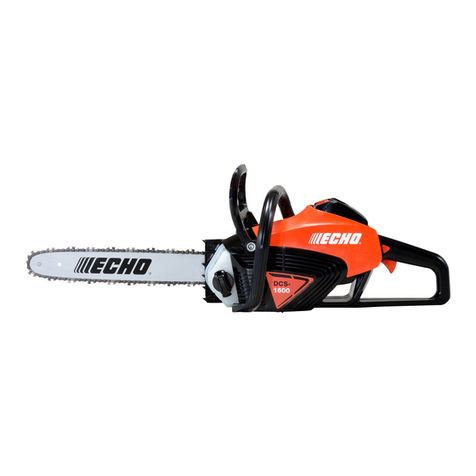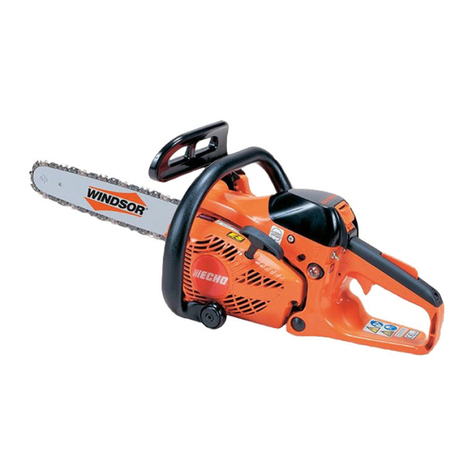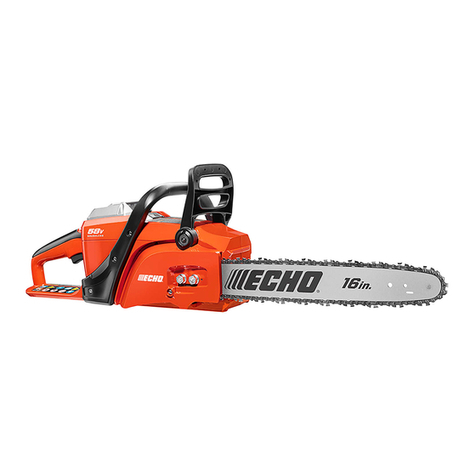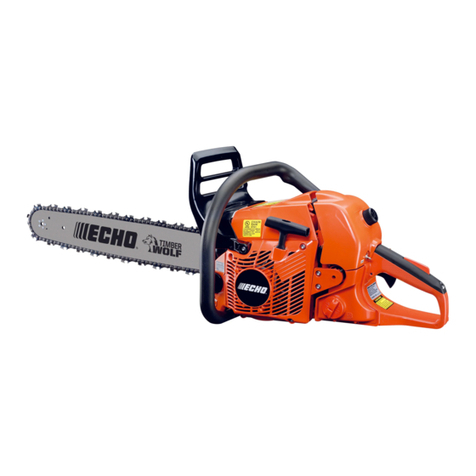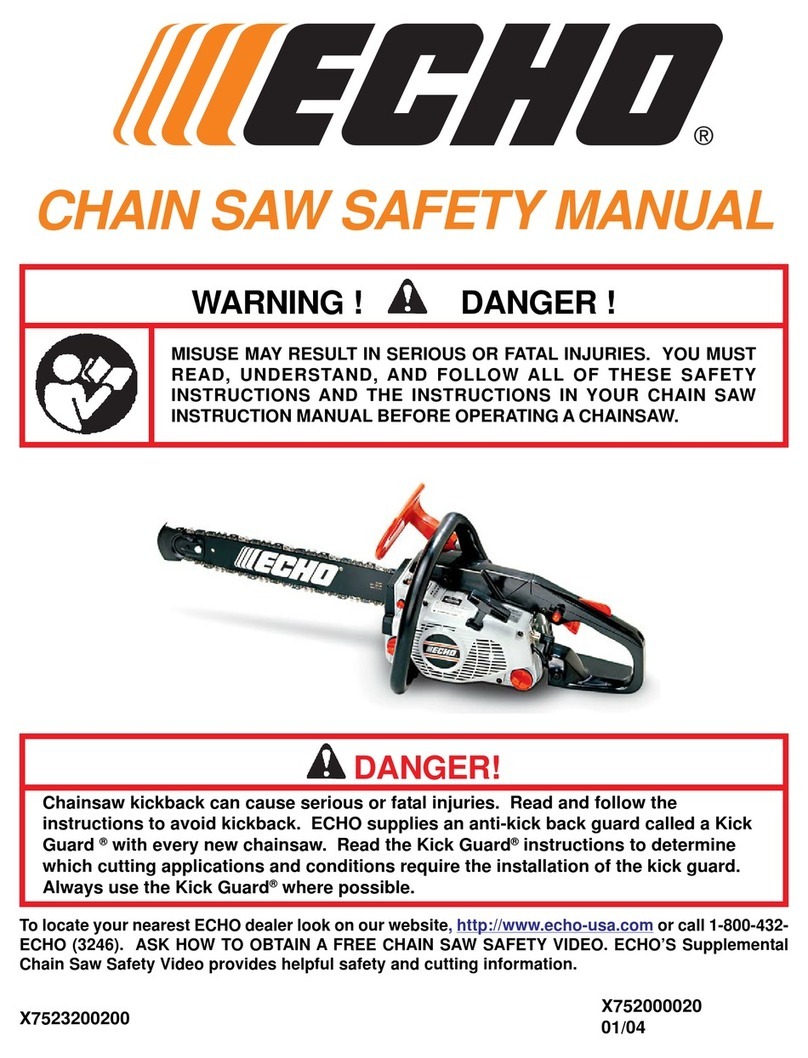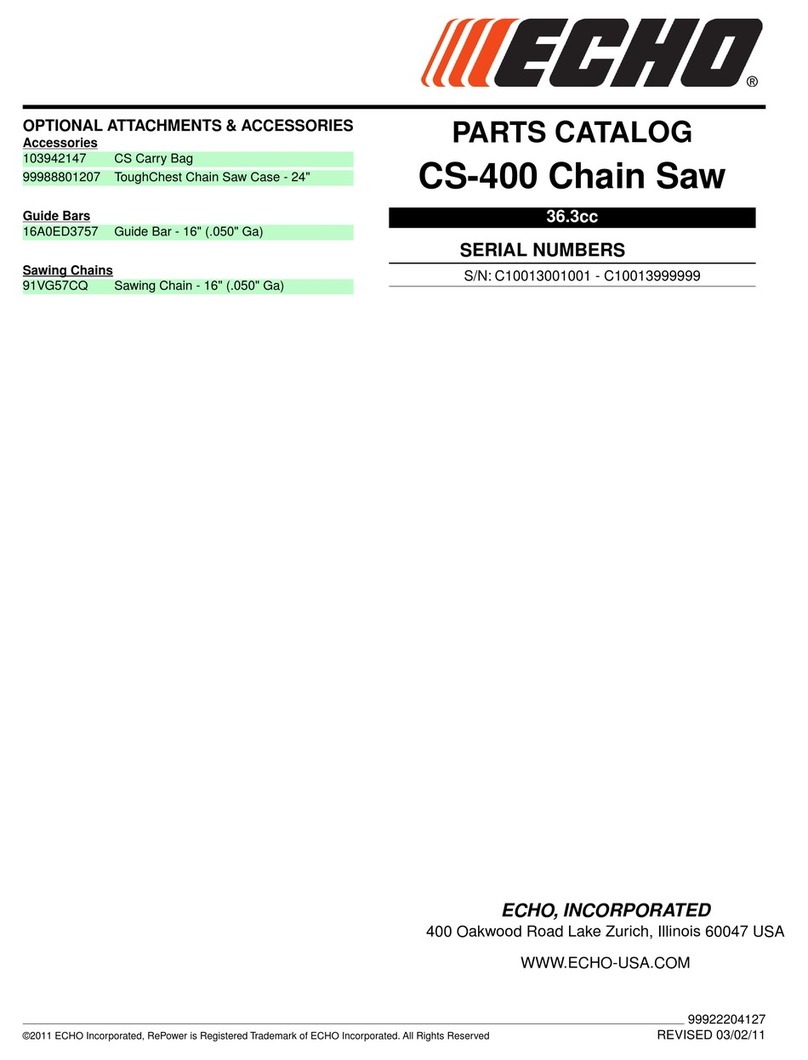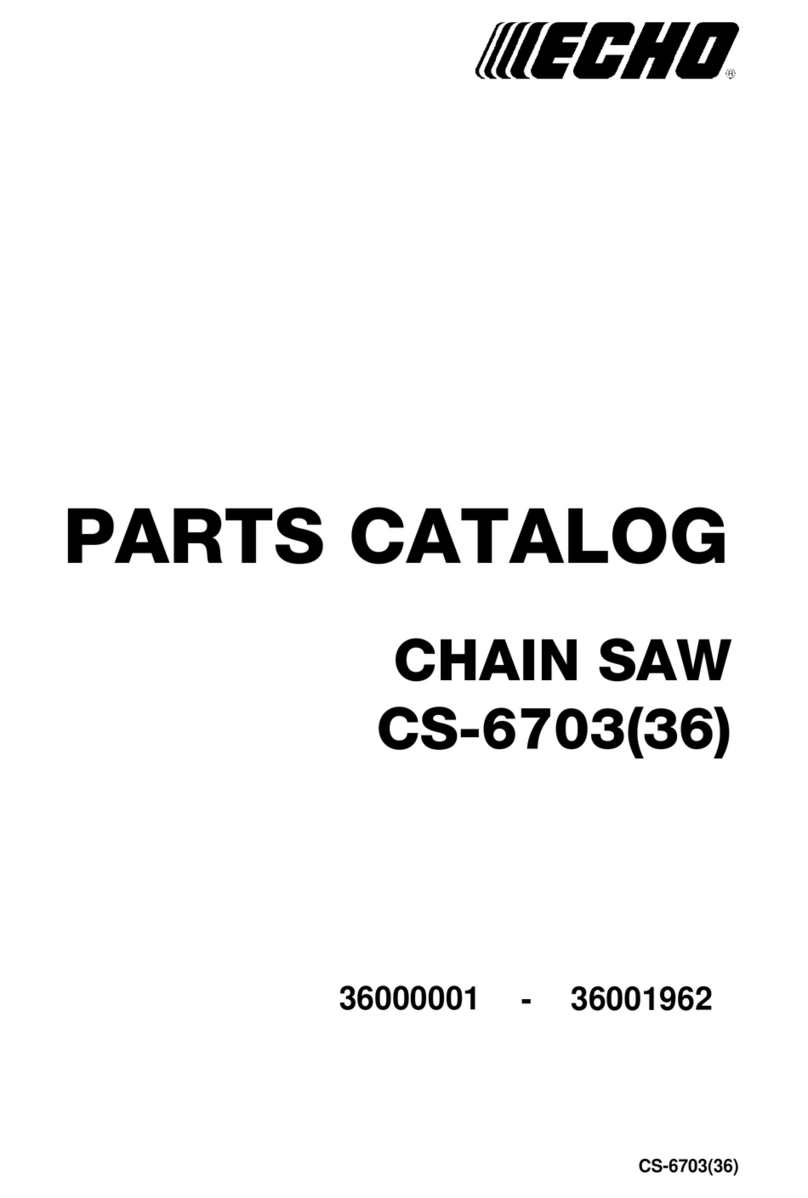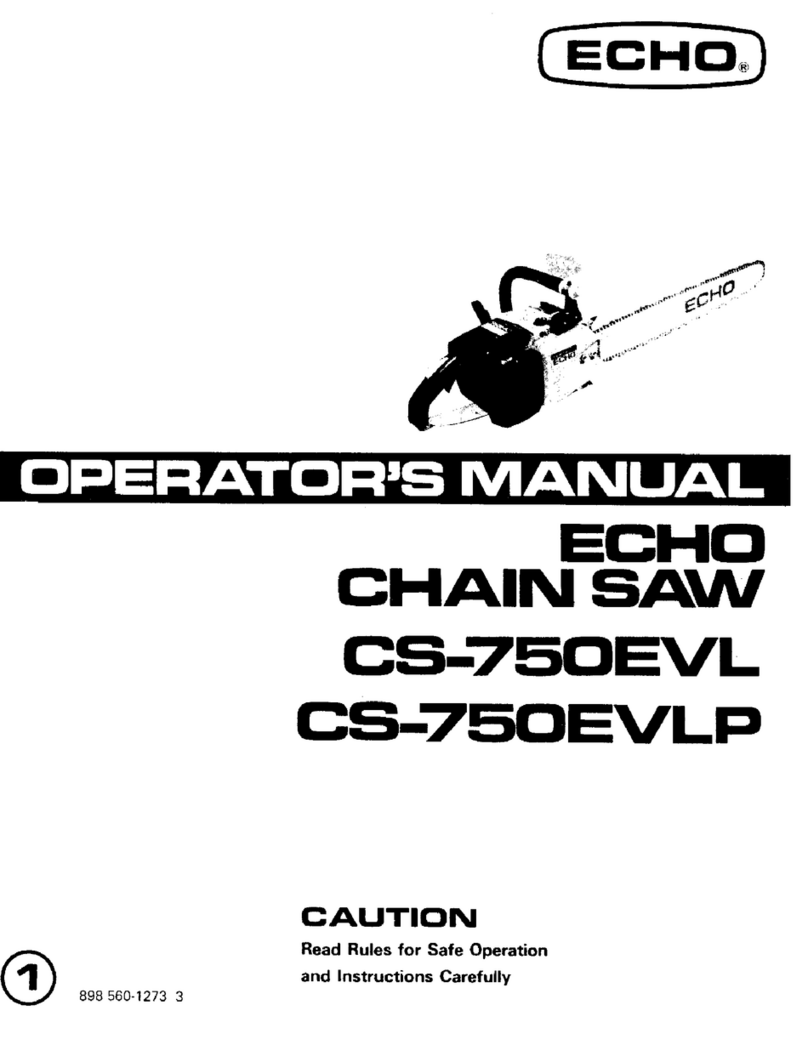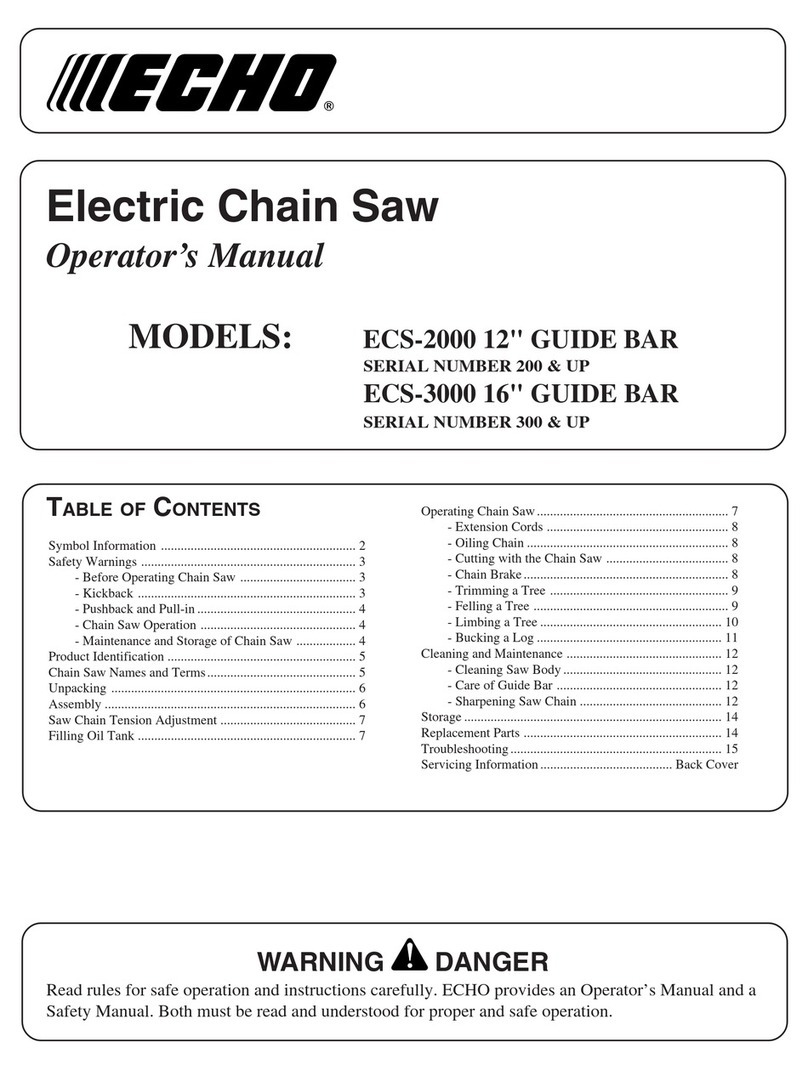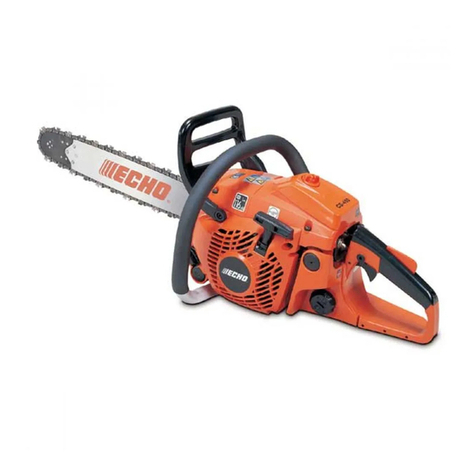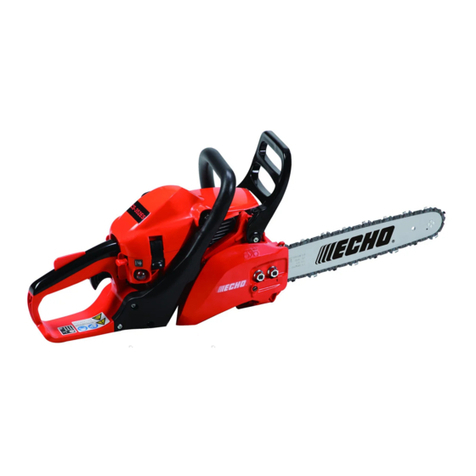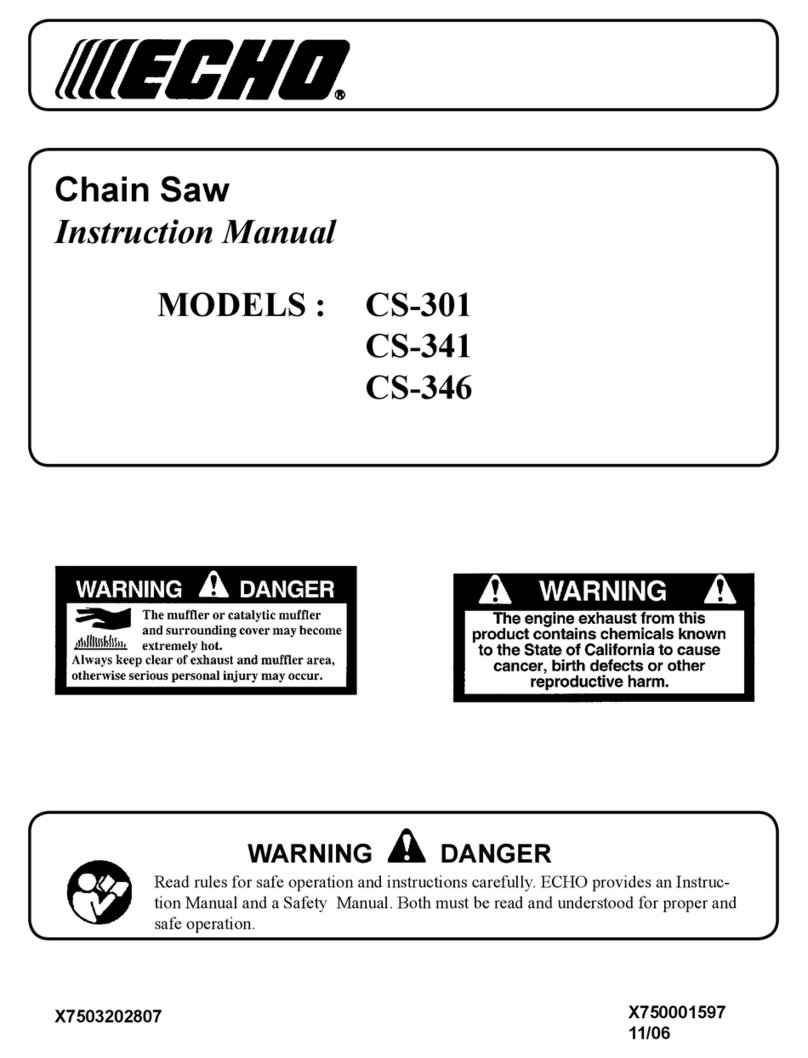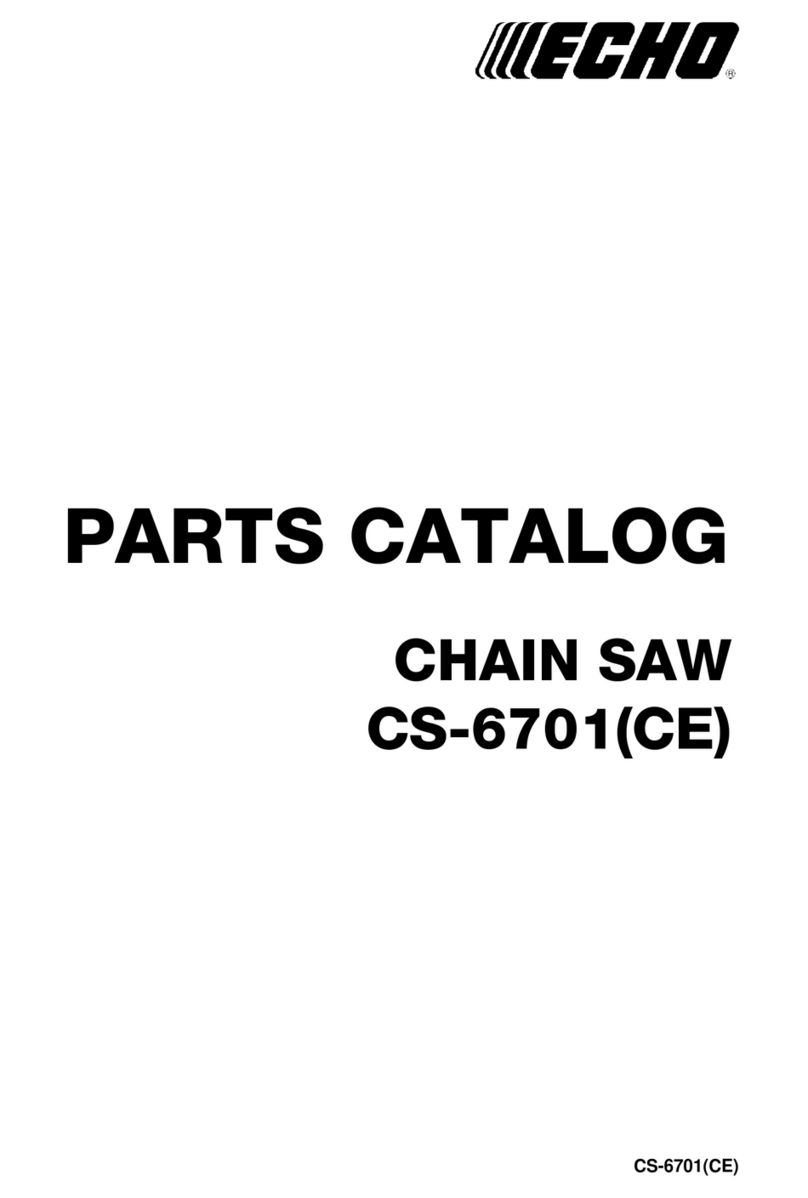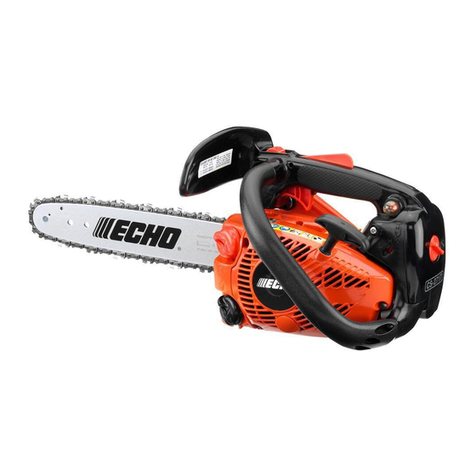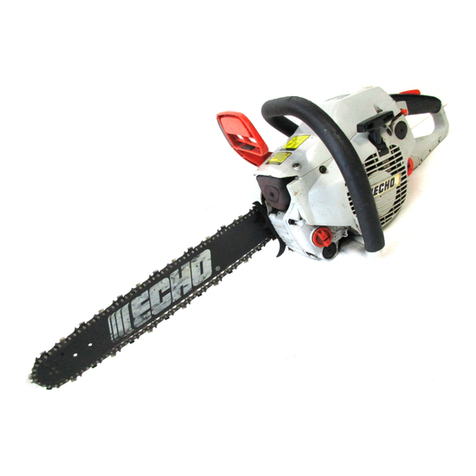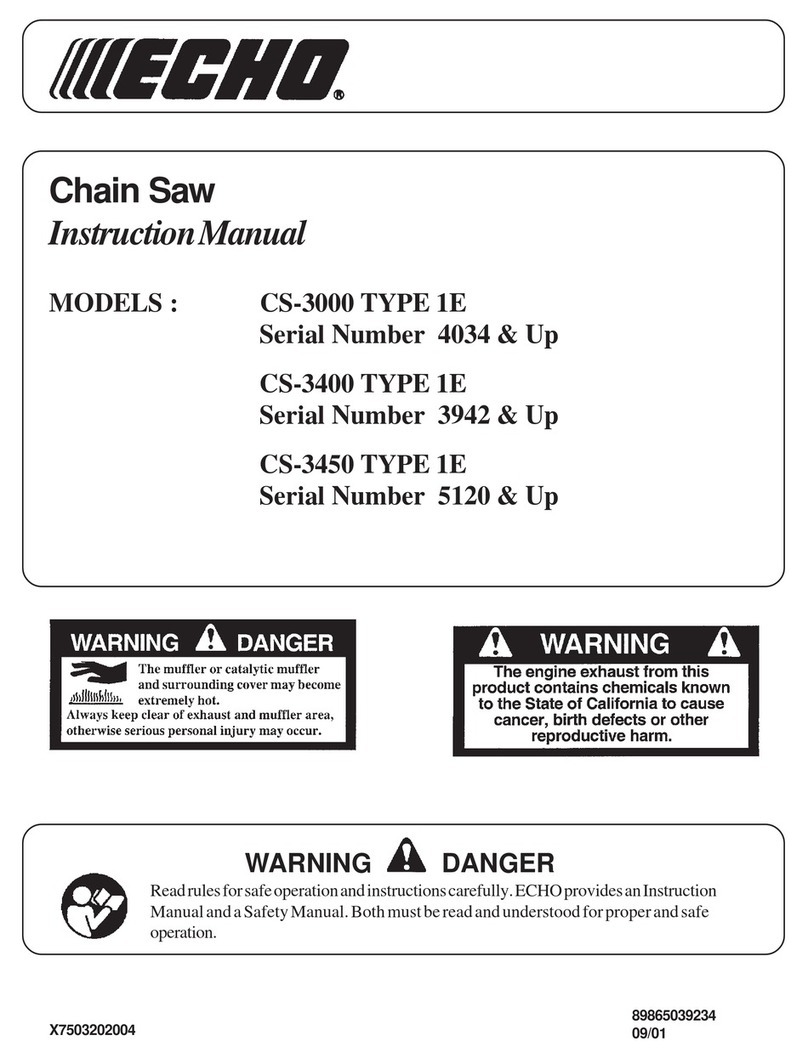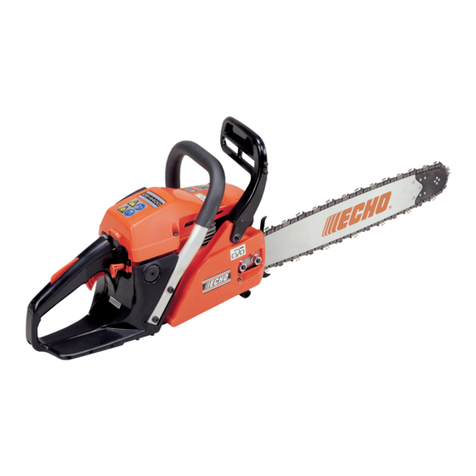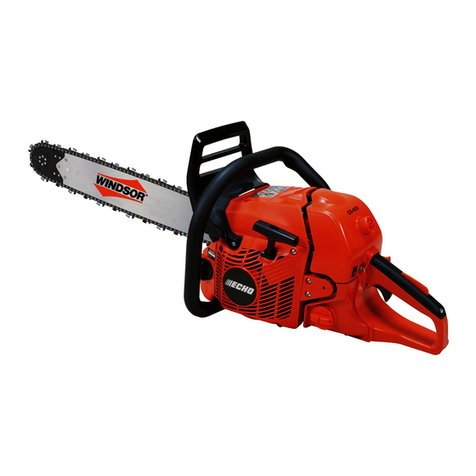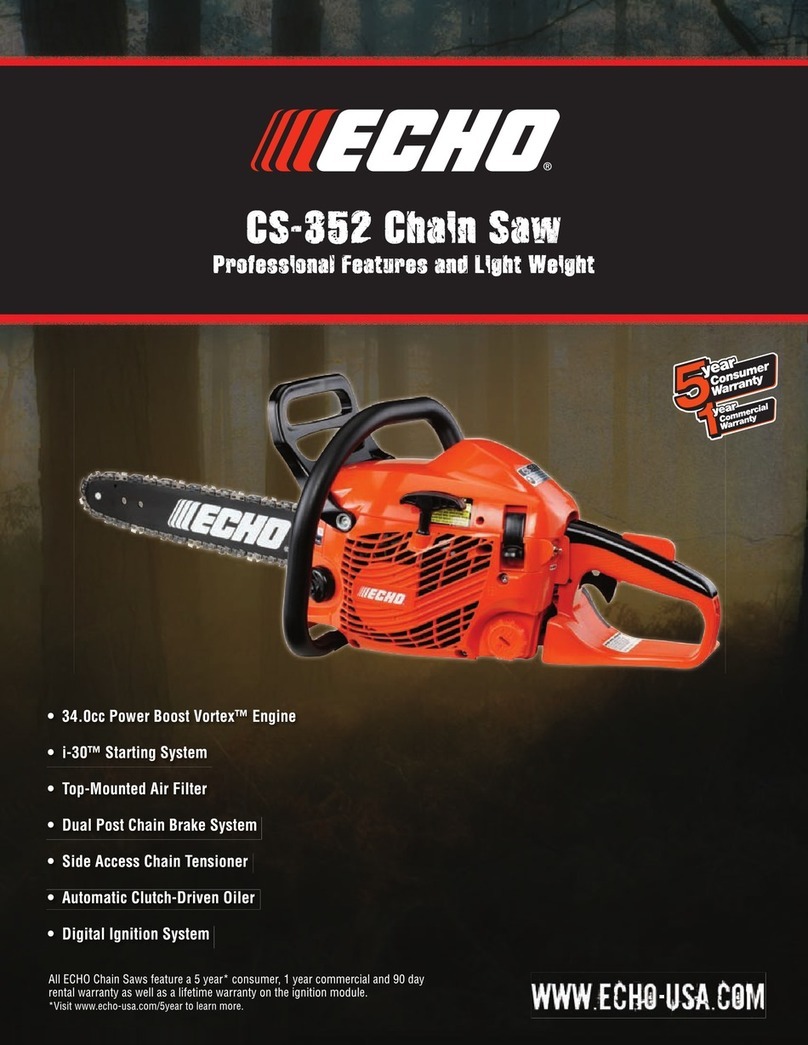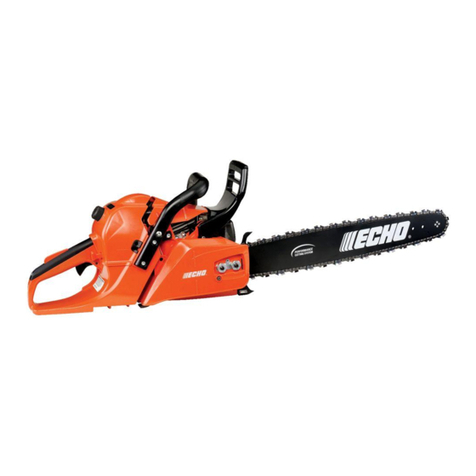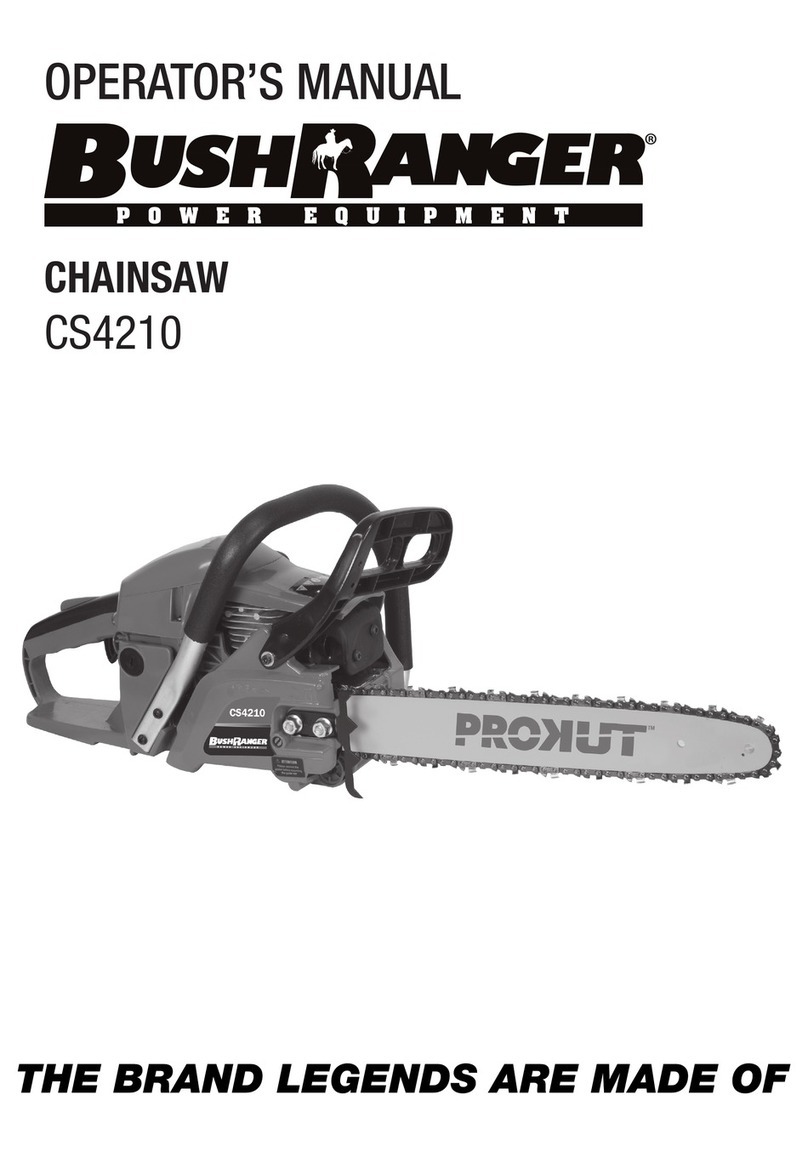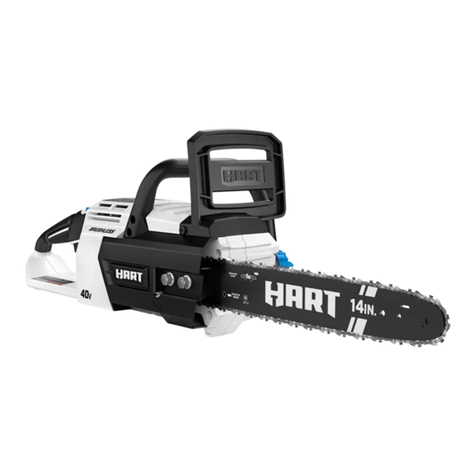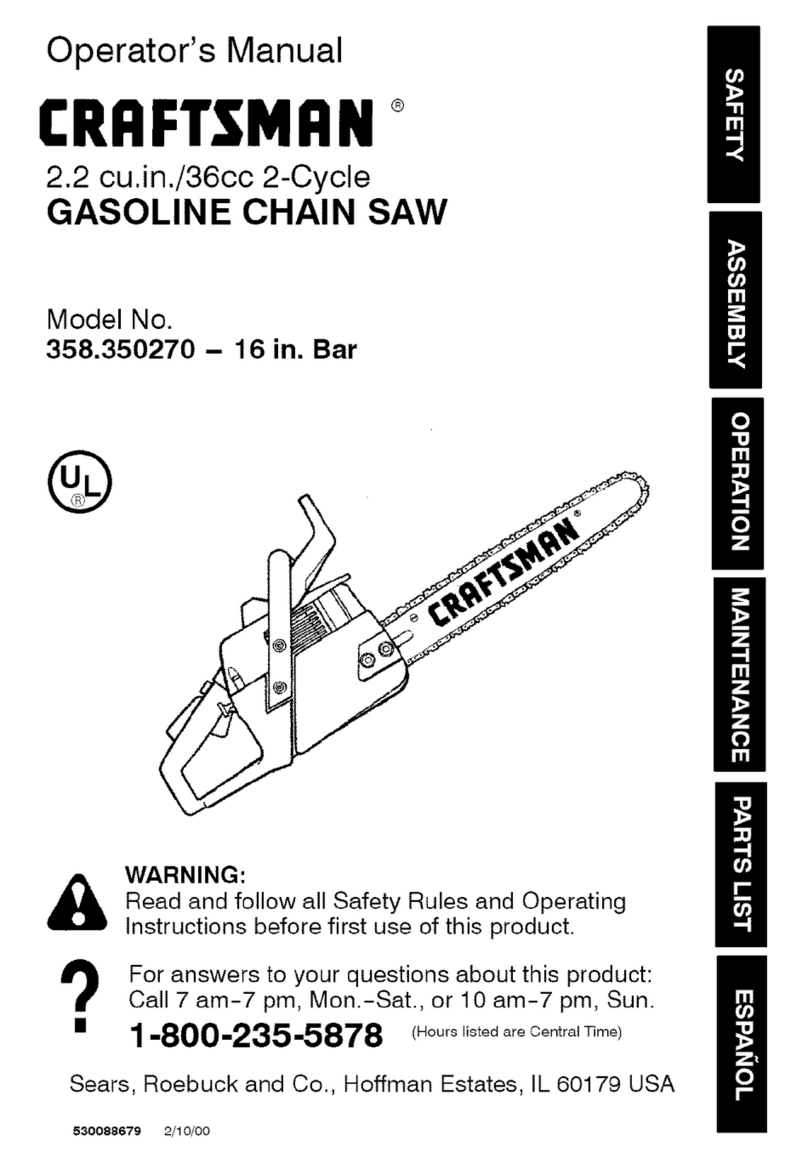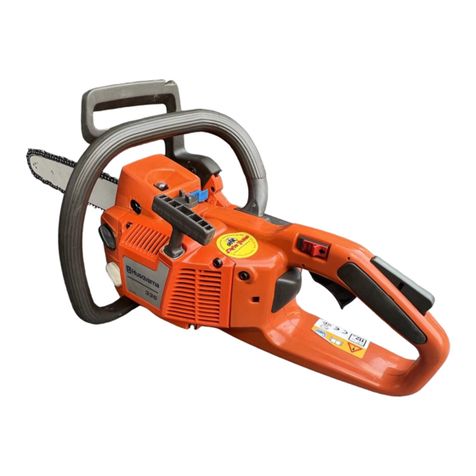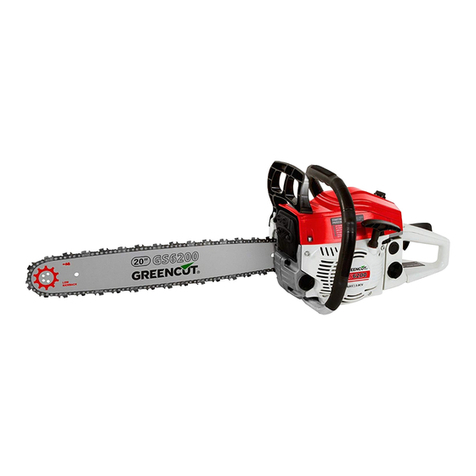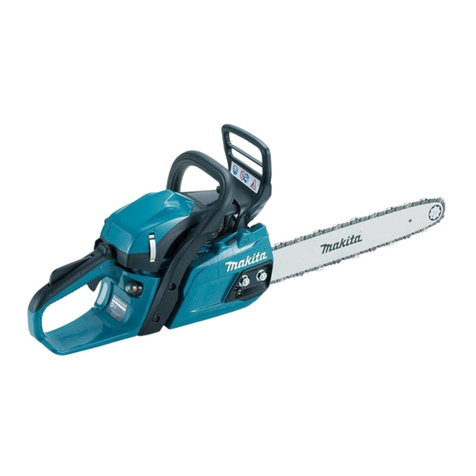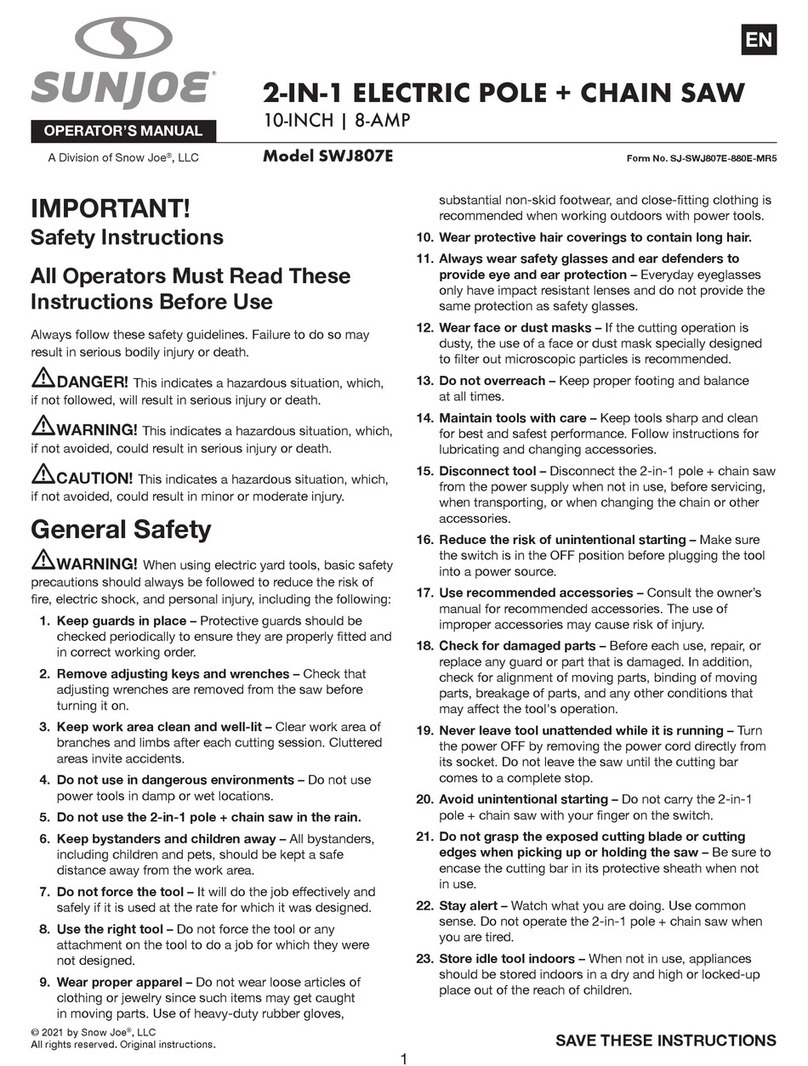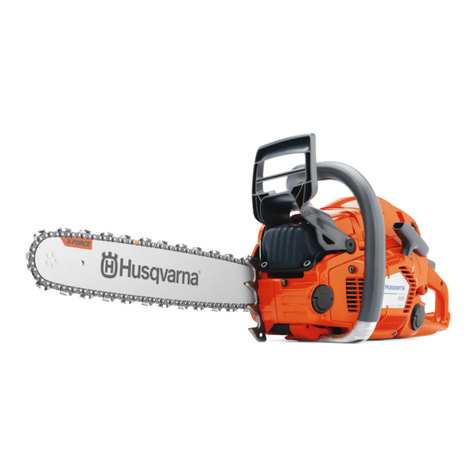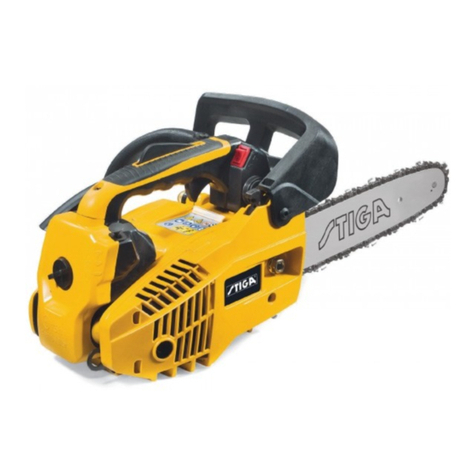
TABLE OF CONTENTS
DCS-1600 1
Page Page
1 SERVICE INFORMATION ………………… 2
1-1 Specications ………………………………… 2
1-2 Technical data ………………………………… 3
1-3 Torque limits ………………………………… 3
1-4 Special repairing materials ………………… 3
1-5 Special tool …………………………………… 3
1-6 Wiring diagram ……………………………… 4
2 TROUBLESHOOTING ……………………… 5
2-1 Error indicator ………………………………… 5
2-2 Troubleshooting chart ……………………… 6
2-3 Diagnosis of abnormal condition ………… 17
3 CHAIN BRAKE SYSTEM ………………… 18
3-1 Inspecting brake switch …………………… 19
3-2 Replacing brake lever …………………… 20
3-3 Replacing chain brake parts ……………… 22
4 SAW CHAIN LUBRICATION SYSTEM … 23
4-1 Inspecting oil cap and strainer …………… 24
4-2 Inspecting oil line ………………………… 25
4-3 Inspecting and replacing worm gear …… 26
4-4 Replacing auto-oiler ……………………… 27
4-5 Seperating motor cover and replacing oil line29
5 SWITCH AND TRIGGER ………………… 30
5-1 Inspecting power switch and variable speed
switch ……………………………………… 31
5-2 Installing switches and trigger lever……… 34
6 MOTOR AND CONTROL SYSTEM …… 36
6-1 Inspecting motor and control board ……… 37
6-2 Installing motor and control board ……… 38
7 AIR FILTER ………………………………… 39
7-1 Cleaning and replacing air lter ………… 39
8 GUIDE BAR MOUNTING SYSTEM …… 40
8-1 Replacing nut for xing guide bar ……… 40
8-2 Assembling chain tensioner ……………… 41
8-3 Inspecting sprocket ……………………… 42
8-4 Replacing guide bar stud ………………… 42
9 BATTERY AND CHARGER ……………… 43
9-1 Battery LED indicator ……………………… 44
9-2 Charger LED indicator …………………… 44
9-3 Inspecting battery ………………………… 45
10 MAINTENANCE GUIDE ………………… 46
10-1 Disassembly chart ………………………… 46
10-2 Service intervals …………………………… 46
